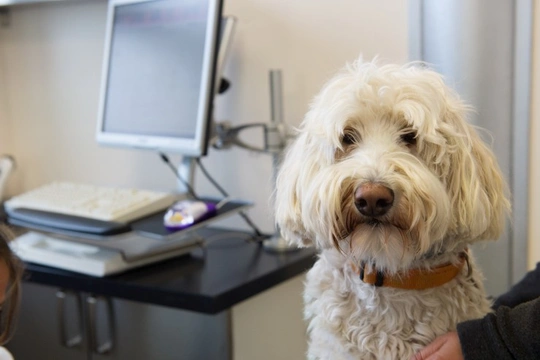
Treatment and management of alopecia in dogs
Alopecia is a condition that leads to hair loss in patches across the head and/or body, and while the condition can be unsightly and emotionally distressing for the people that it effects, it is not usually painful. Alopecia can also affect dogs as well as humans, and while as mentioned, it is not usually painful and your dog may not even be aware of it, this can give them a rather ragged and untidy appearance and cause distress for their owners. In some cases, the hair loss will be itchy or irritating, particularly in breeds of dog that usually shed very little and whose shed hair remains tangled in the coat, like the poodle.
However, hair loss across parts of the body can cause problems of its own, because the coat performs a wide range of important functions for the dog as well as simply looking good! Dogs that suffer from alopecia will be more likely to feel the cold, be at risk of sunburn, and have other problems that can arise when the layer of insulation and protection afforded by the coat disappears.
Due to the fact that alopecia is not usually painful and will not have a psychological impact on the affected dog, often, no treatment is given-and once the condition is diagnosed, your vet may simply advise you to accept the condition and move forwards. However, alopecia can be irritating, and while it cannot be cured, there are a range of different treatment and management options that can help to ease flare-ups and improve the condition of the skin and coat, which may be advisable if the condition is leading to secondary complications and problems.
In this article, we will look at some of the different treatment and management options for alopecia in dogs, and the types of scenarios that may merit attempting them. Read on to learn more.
Types of alopecia in dogs
The most common presentations of alopecia in dogs are divided into two categories, each of which occurs in a slightly different way; these are referred to as simply canine alopecia, and canine flank alopecia respectively. Canine flank alopecia is sometimes referred to interchangeably as seasonal alopecia, because the cycle of the condition follows seasonal changes.
In general canine alopecia, the dog is apt to lose all or a significant amount of their fur in large patches, or over the whole of the body and head. Whilst this may cause no other symptoms, there is also a chance that the hair loss will be itchy and uncomfortable for your dog, and may be accompanied by sore, inflamed skin in the affected areas. This in turn may well cause your dog to scratch and chew at their skin to gain some relief from the inflammation and irritation, raising the risk of other secondary complications.
In canine flank alopecia, the pattern that the hair loss follows is likely to be rather different. The hair loss in this case will tend to move in cycles, with the hair growing or re-growing at certain times of the year and becoming totally dormant in others. Additionally, the hair regrowth will potentially be different in terms of texture, thickness, appearance, and potentially colour too.
Most of the hair loss in canine flank alopecia will, as the name implies, affect the flanks of the dog in the large part, and appear simultaneously in a symmetrical pattern on both sides of the flanks. Whilst the hair loss may extend as far as the spine and the hind legs, canine flank alopecia rarely affects the face, head and front of the body. Additionally, the skin under the areas of hair loss will often change in colour and texture too, usually becoming darker than before.
Treatment options for canine alopecia
If your dog’s alopecia is leading to problems such as itchy, irritated skin, you may need to talk to your vet about ways to manage the condition, and mitigate the impact that the condition has on your dog.
While there is no magic medication that can cause the hair to regrow over affected areas nor help the dog to keep the hair they do have left, there are a range of things that can be done to lessen the impact alopecia has on your dog, and reduce the chances of secondary problems developing.
Keeping the skin and remaining hair healthy and keeping your dog in general healthy will help, and reducing any stress in your dog’s life will often help a lot too, as alopecia tends to present most acutely at times of stress.
If your dog’s alopecia is making them chronically itchy, they will feel rather uncomfortable and also, risk damaging their skin whilst scratching. This may mean treatment with corticosteroid medications is indicated in order to strengthen the skin. In some cases, antibiotics may be required too, particularly if your dog’s skin is sore and inflamed, and so, at risk of infections.
Keeping a dog with alopecia free of fleas, other parasites and irritants is really important too, as anything that can affect the skin or coat will only worsen alopecia.
Gently but thoroughly brushing your dog regularly too is important, to remove shed hair from the coat and help to stimulate cell growth.
Additionally, your dog will need protection from the cold in the form of coats and jumpers for use both on walks, and inside if your home is cool too. In the summer, you should also take pains to protect them from sunburn, using sun creams and cover-ups too.



